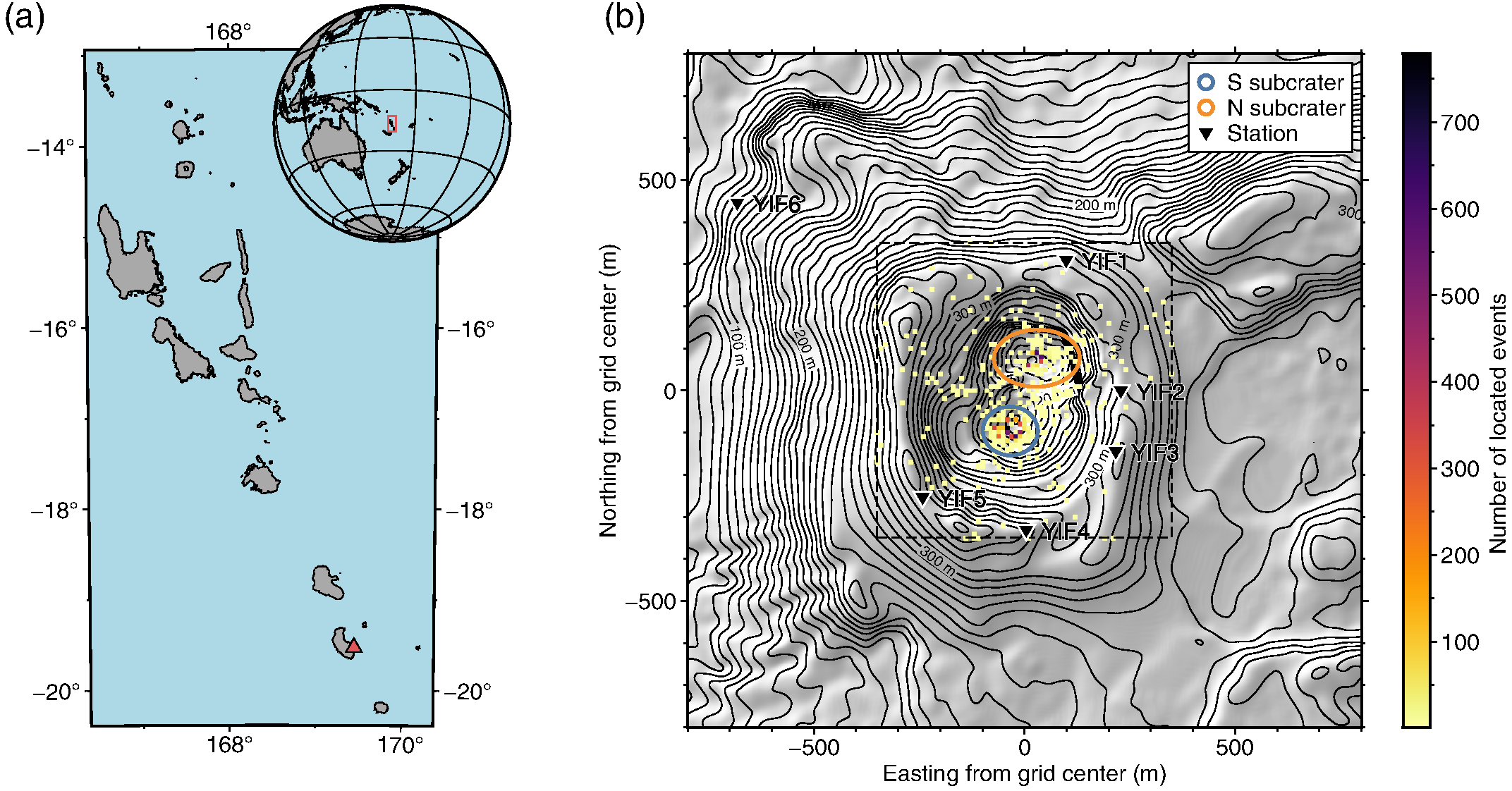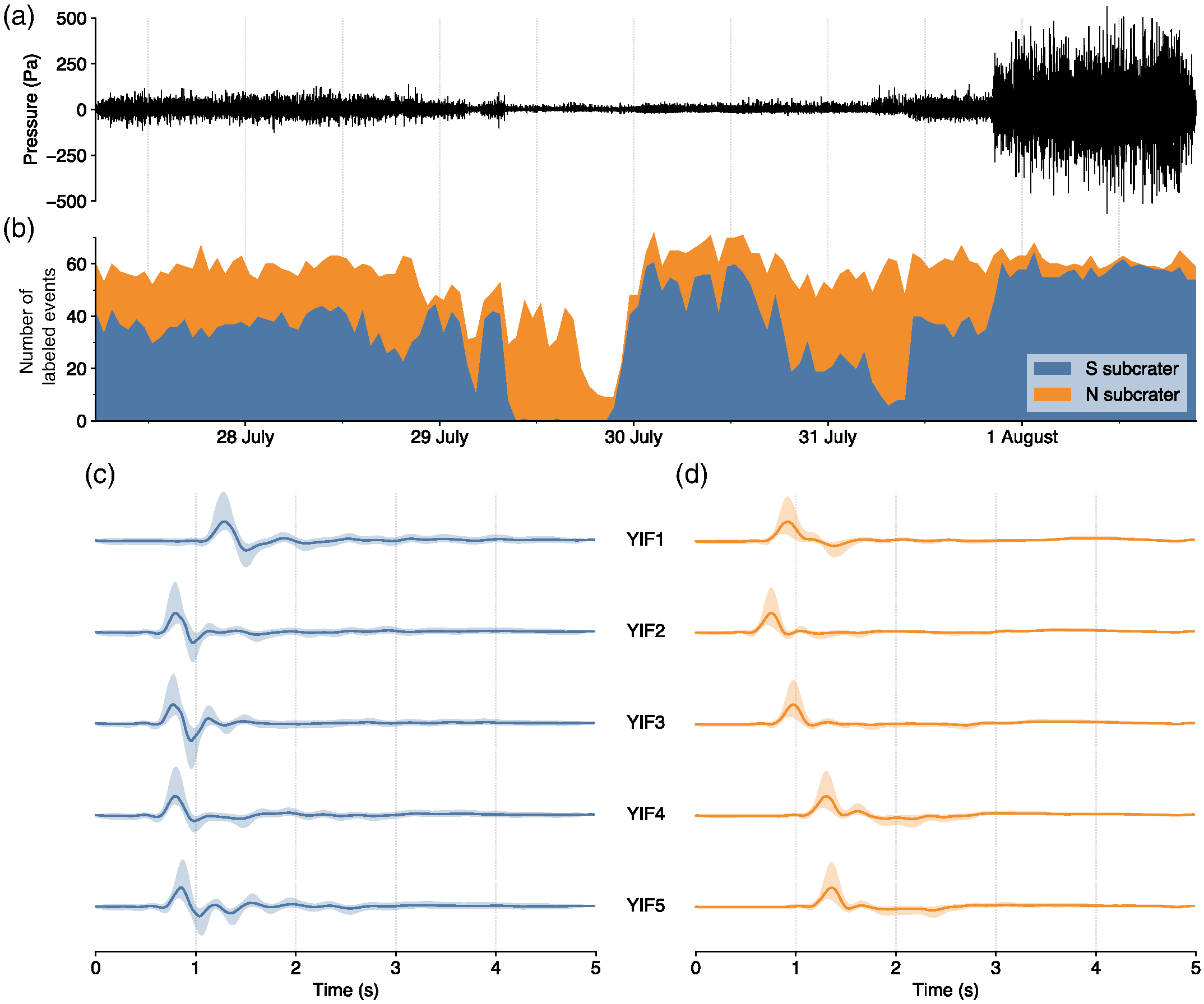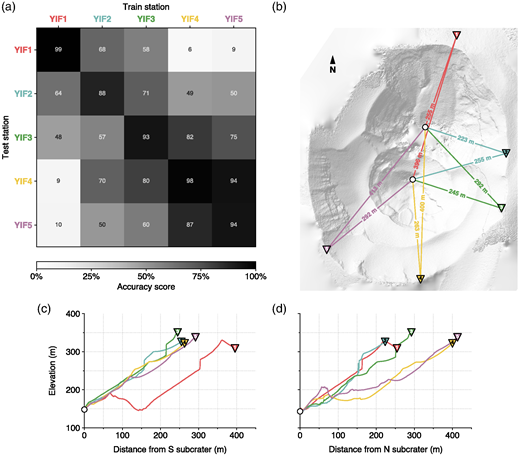Volcano infrasound data contain a wealth of information about eruptive patterns, for which machine learning (ML) is an emerging analysis tool. Although global catalogs of labeled infrasound events exist, the application of supervised ML to local (<15 km) volcano infrasound signals has been limited by a lack of robust labeled datasets. Here, we automatically generate a labeled dataset of >7500 explosions recorded by a five‐station infrasound network at the highly active Yasur Volcano, Vanuatu. Explosions are located via backprojection and associated with one of Yasur’s two summit subcraters. We then apply a supervised ML approach to classify the subcrater of origin. When trained and tested on data from the same station, our chosen algorithm is >95% accurate; when training and testing on different stations, accuracy drops to about 75%. The choice of waveform features provided to the algorithm strongly influences classification performance.



